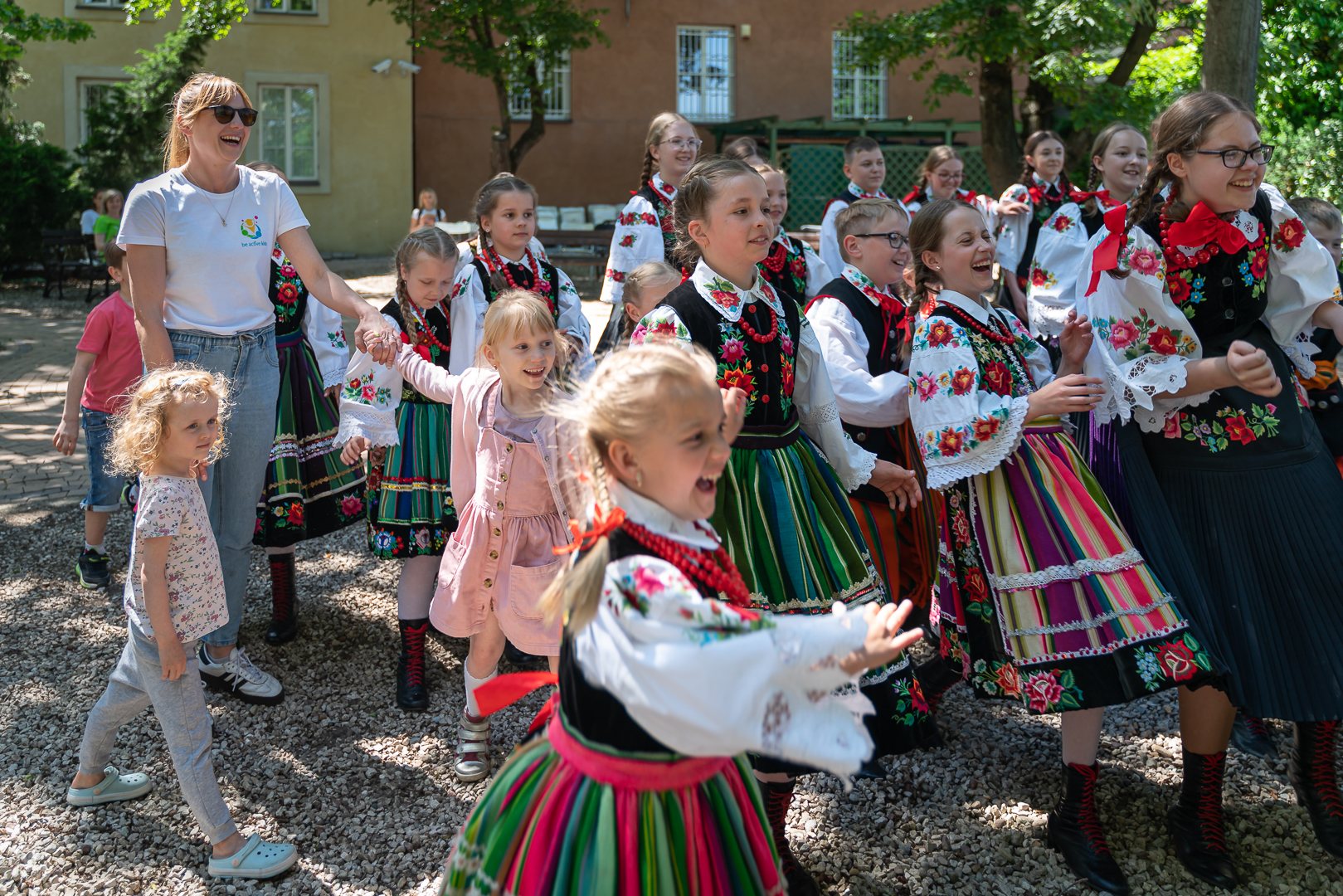"When a child laughs, the whole world laughs"
Janusz Korczak
Until quite recently, childhood for most children was not "idyllic, angelic," but very difficult. For centuries, children lived on the margins of adult life. Attitudes toward them were often indifferent. How they were treated can be evidenced by art, for children were rarely mentioned in documents. In medieval art, children, if they appeared, were depicted as lesser adults, which reflected their place in society. Childhood was not an exceptional period. It was certainly influenced by the high mortality rate. Every third child who was born did not live to see a year. It was not until the 18th century, with improvements in living conditions and hygiene, that the death of a child began to be treated as a loss.
The children were not overindulged and were drawn into the adult world as quickly as possible. From an early age, they were imposed with many responsibilities that they had to meet. Their task was to help on the farm or take care of the animals. It also fell on their shoulders to watch over younger siblings. In poorer homes, children were sent to do hard labor and often had to take care of their own and their families' livelihoods on their own.
Today every children's room is full of toys and children's clothes. In the past, even this was not so obvious. Separate children's dress began to take shape only in the 14th century and applied only to children from the homes of the nobility and wealthier bourgeoisie. Children of peasants and poorer craftsmen were dressed in the same way as adults. New clothes were mainly given to the eldest children in families, while younger children donned outfits after their older siblings.
Children have always liked toys, but they were not always available to them. The most popular toys on old farms were wooden horses, birds or windmills and dolls. At the same time, the creators of most of them were other family members. Wooden toys were often planed by fathers or older brothers. Mothers sewed dolls from leftover materials. The first artisanal toys were created, as it were, by the way. Only when the demand for such toys grew did manufacturers specializing exclusively in such activities begin to appear. For a very long time, however, these things were very expensive, and therefore intended only for children from the richest families.
As the toy market developed, people began to look at toys not just as objects for pure entertainment, but saw their educational potential. For example, the first jigsaw puzzles were created by John Spilsbury in 1767.They depicted a map of Europe and were intended to help learn geography. Also, the first board games were created for a similar purpose.
The approach to and treatment of children did not begin to gradually change until the late 19th century. It was then that criticism of viewing children as the property of their parents first began, and it was from this period that the first references to children's rights came. Doctors, educators and lawyers increasingly pointed out that children were not just lesser adults and were different in both physical strength and psyche. There were increasing protests against the exploitation of children and sending them to work. In 1913, the first International Congress for the Protection of Childhood was held. However, the real turnaround in the treatment of children came only in the post-war years. In 1946, UNICEF was founded, which set itself the goal of caring for children in countries devastated by war. It began to introduce programs including child nutrition, health care, immunization, emergency aid and combating social ills. In the early 1950s, International Children's Day was established. In Poland and other former socialist countries, the day is celebrated on June 1.
When we talk about the rights of children, it is impossible not to mention the figure of Janusz Korczak. There are few people in Poland to whom children owe so much. He was one of those people who started the discussion in our country about the need to respect the rights of children. He devoted his entire life to caring for orphans and children from the poorest families. In the institutions he ran, he focused not only on ensuring that children had food and a roof over their heads, but also made sure that children had equal rights and responsibilities. In these institutions a children's parliament, court or a newspaper edited by children came out. It is Korczak who is also the author of "Your Child's Appeal," a text that has guided many parents and shown the way for a century.
On the occasion of Children's Day, we wish all children that their childhood was always peaceful, full of warmth, love and respect, and that, as Janusz Korczak taught - they were allowed to err and joyfully strive to improve," because nothing else teaches life and gives confidence like the opportunity to make one's own mistakes and correct them with the help and presence of loved ones.
Text: Magdalena Trzaska
Sources: dziennikpolski24.pl
www.focus.pl
Photo by Krzysztof Zhuczkowski

